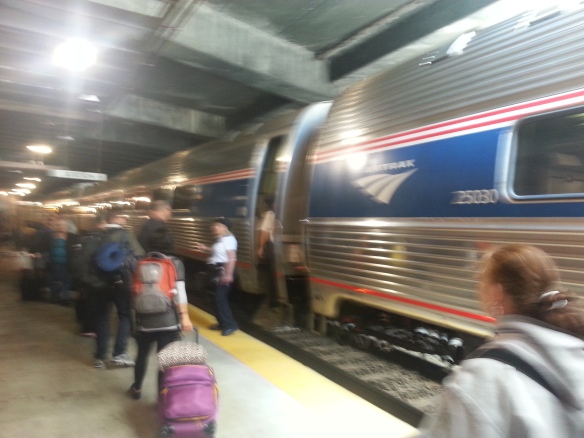Today, I took a trip down to Quincy Adams. I did it solely for the sake of the ride a good month-plus after I last rode for riding’s sake. Let’s just say nobody is really missing much.
Systems built over the last four decades or so always have a station or several built largely for the purpose of a park and ride crowd; the Red Line has two, this and Alewife. For that role, Quincy Adams performs well with easy access to Route 3 and I-93 for those heading from a swath of points south going from Rhode Island to Cape Cod. While the aforementioned Alewife has seen new development rise around it in the midst of existing development, Quincy Adams hasn’t just avoided it, it willingly cut off its own legs.
There’s a pedestrian bridge to areas east of Quincy Adams that has been locked for about 25 years, the consequence of reactive thinking and illegal parking. Never has the MBTA evaluated unlocking it for the benefit of residents whom have to drive or walk over a mile out of their way to access a station they can see. While there are some areas within walking distance to the west, accessing anything on foot with a huge interchange nearby is always a bit of a risk not to mention that said interchange cuts some areas off. Though the nature of that area is heavily residental, imagine if for example pedestrian access to Melrose from Oak Grove was cut off.
As for Quincy Adams itself, the station seems like an rough draft, open-air hybrid of Alewife and Davis on the other end of the line. The mezzanine and garages seem like a shrunken down version of Alewife with less retail and less overall traffic in with constrained foot traffic and only one bus feeding into the station. the platform itself is Davis in draft mode right down to the diagonal signs/benches in the middle of the platform thought without the artwork that Davis is known for, instead with a hole in the center begging to be filled. To some degree, filling them would help a little as it would give something to write home about here.
Station: Quincy Adams
Rating (1-10): 3
Ridership: This is a big park-and-ride and little else. There are some residences and businesses to the west which drive nominal traffic. The one true bus* that utilizes Quincy Adams, the 238, is a connector that serve South Shore Plaza, western Braintree, Randolph, and Avon as well as Quincy Center and this brings in some riderhip not wanting to pay high Commuter Rail prices.
Pros: If you’re along the I-95, Route 1, and Route 3 corridors, this station is a godsend as it has ample parking spaces and is relatively clean and very well-kept.
Cons: The locked gate to Independence Avenue and the general lack of bus access into the station. The 238 has a lower rate of service as it should and the just from my limited exposure to the station it seems like it was built for the park and ride and little else.
Nearby and Noteworthy: There’s a BJ’s and a Home Depot within walking distance. There literally is nothing else of note. That says a ton.
* There is one outbound-only run of the 210 that runs after-hours mainly for the purpose of getting closed station employees to Caddigan Yard in Braintree and little else.

